Exploring the Tradition of Tea Ceremonies Through Ceramics
Tea ceremonies are not just about sipping a warm beverage; they are a celebration of culture, a ritual steeped in history, and an art form that encapsulates the essence of mindfulness. From the tranquil gardens of Japan to the bustling teahouses of China, these ceremonies have evolved over centuries, each with its own unique flair and significance. At the heart of these rituals lies an essential element that enhances both the experience and the aesthetic: ceramics.
Imagine walking into a serene room, the air filled with the delicate aroma of freshly brewed tea. The centerpiece of this experience? Beautifully crafted ceramic teapots, cups, and bowls, each telling a story of the tradition and craftsmanship behind them. The role of ceramics in tea ceremonies is not merely functional; it is deeply intertwined with the cultural narratives that have been passed down through generations. In this article, we will delve into the historical roots of tea ceremonies, explore the various types of ceramics used, and discover how these elements come together to create a truly immersive experience.
Tea ceremonies trace their origins back to ancient civilizations, where the act of preparing and consuming tea was more than just a daily routine; it was a ritual filled with symbolism and meaning. The earliest records of tea consumption date back to China, where it was revered for its medicinal properties. Over time, the practice spread to other regions, each adapting the ceremony to reflect their own cultural values.
In Japan, for instance, the tea ceremony, known as Chanoyu, developed into a highly stylized art form during the 15th and 16th centuries, influenced by Zen Buddhism. The simplicity and elegance of the ritual mirror the principles of Zen, emphasizing harmony, respect, purity, and tranquility. As these traditions evolved, they were shaped by various cultural influences, resulting in a rich tapestry of practices that continue to captivate tea enthusiasts around the world.
Ceramics play a pivotal role in tea ceremonies, serving both practical and aesthetic functions. The choice of tea ware can significantly affect the overall experience, from the flavor of the tea to the atmosphere of the ceremony. Each piece of ceramic has its own unique characteristics, contributing to the sensory experience of tea drinking.
Various types of ceramics are utilized in tea ceremonies, and each type brings its own charm to the ritual. Here are some of the most notable:
- Traditional Japanese Tea Ware: Known for their understated beauty and craftsmanship, these pieces reflect the principles of wabi-sabi, celebrating the beauty of imperfection.
- Chinese Yixing Teapots: Made from a unique clay, these teapots are famous for their ability to enhance the flavor of tea over time, becoming more flavorful with each brew.
- Modern Ceramics: Contemporary potters are experimenting with designs that blend traditional aesthetics with modern sensibilities, creating unique pieces that resonate with today's tea drinkers.
Japanese tea ware holds a special place in the hearts of tea enthusiasts. The elegance of a simple chawan (tea bowl) or kyusu (teapot) is a testament to the artistry of Japanese ceramics. These pieces are often handcrafted, reflecting the natural beauty of the materials used. They embody the philosophy of mono no aware, the awareness of impermanence, reminding us to appreciate the fleeting moments of beauty in life.
On the other hand, Yixing teapots are a marvel of Chinese craftsmanship. Made from a special type of clay found in the Yixing region, these teapots are known for their porous nature, which allows them to absorb the flavors of the tea brewed within. Over time, a well-used Yixing teapot becomes a cherished tool, enhancing the flavor of every brew and creating a personal connection between the tea drinker and their tea.
The visual appeal of tea ceramics cannot be overstated. The colors, textures, and forms of each piece contribute to the ambiance of the tea ceremony. A beautifully arranged tea setting can elevate the experience, making it not just a drink, but an artful expression of culture and tradition. The interplay of light on the surface of a glazed teapot, the delicate patterns etched into a cup, and the overall harmony of the setting create a feast for the senses.
As the world evolves, so too do tea ceremonies. Contemporary interpretations often blend traditional practices with modern influences, leading to a dynamic evolution of the ritual. Today, artists and potters are reimagining tea ware, creating innovative designs that respect tradition while appealing to modern aesthetics.
Modern ceramic artists are pushing the boundaries of traditional forms, experimenting with colors, shapes, and materials. These innovative designs reflect current trends while maintaining a connection to the rich history of tea culture. Whether it’s a minimalist teapot that speaks to modern sensibilities or a vibrant, sculptural piece that challenges convention, these ceramics invite tea drinkers to explore new dimensions of their tea experience.
Tea ceremonies have transcended cultural boundaries, influencing practices worldwide. As tea culture spreads, ceramics play a crucial role in its globalization. From the bustling streets of London to the tranquil cafes of Kyoto, the beauty of ceramic tea ware continues to captivate hearts and minds, creating a shared appreciation for this ancient ritual.
Q: What is the significance of ceramics in tea ceremonies?
Ceramics are essential in tea ceremonies as they enhance the sensory experience of tea drinking and reflect the cultural significance of the ritual.
Q: How do Yixing teapots differ from other teapots?
Yixing teapots are made from a unique clay that absorbs flavors over time, enhancing the taste of the tea brewed in them.
Q: Can modern ceramics be used in traditional tea ceremonies?
Yes! Many modern ceramic designs respect traditional aesthetics while offering innovative takes that can be seamlessly integrated into tea ceremonies.
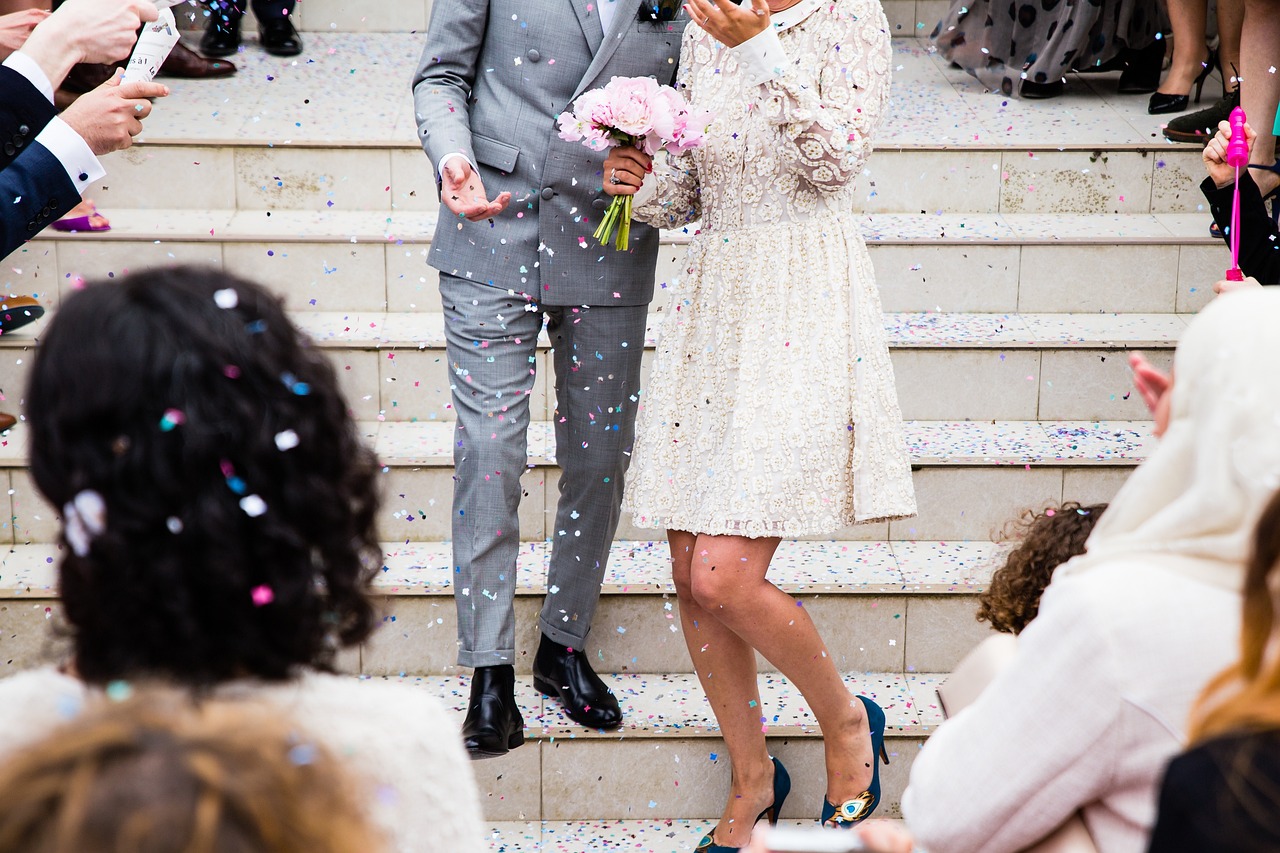
The Historical Roots of Tea Ceremonies
Tea ceremonies are not just rituals; they are a celebration of culture, steeped in history and tradition. The origins of tea ceremonies can be traced back to ancient China, where tea drinking was first documented as early as the Shang Dynasty (1600-1046 BC). Initially, tea was consumed for its medicinal properties, but as its popularity grew, so did the significance of its preparation and consumption. The evolution of these ceremonies reflects the changing social and cultural landscapes, highlighting the deep connection between tea and the human experience.
As the practice of tea drinking spread across Asia, it began to take on different forms. In Japan, the tea ceremony, known as Chanoyu, developed during the 15th century under the influence of Zen Buddhism. This transformation emphasized mindfulness and the beauty of simplicity, turning the act of drinking tea into a spiritual practice. The Japanese tea ceremony is characterized by its meticulous attention to detail, from the selection of tea utensils to the arrangement of the tea room, creating an atmosphere of tranquility and reflection.
In contrast, the Chinese tea ceremony, or Gongfu Cha, focuses on the art of brewing and appreciating tea. This practice emphasizes the quality of the tea leaves, the precision of the brewing process, and the aesthetic presentation of the tea. The historical roots of Gongfu Cha can be linked to the Tang Dynasty (618-907 AD), where tea drinking became a popular social activity among the elite. Over time, the ceremony evolved, incorporating various regional styles and customs.
The cultural significance of tea ceremonies extends beyond the act of drinking tea; they serve as a reflection of societal values and artistic expression. For instance, the tea ceremony in both Japan and China emphasizes respect, harmony, and the appreciation of nature. The rituals surrounding tea preparation and consumption often involve elements such as poetry, music, and calligraphy, showcasing the interconnectedness of various art forms.
As tea ceremonies spread beyond Asia, they began to influence cultures worldwide. In the West, tea drinking became a social event during the 17th and 18th centuries, leading to the establishment of afternoon tea in Britain. While this practice diverged from traditional ceremonies, it retained the essence of gathering and sharing, highlighting the universal appeal of tea as a social lubricant.
In summary, the historical roots of tea ceremonies reveal a rich tapestry of cultural significance and evolution. From ancient China to modern interpretations around the world, tea has played a pivotal role in shaping social interactions and artistic expressions. The journey of tea ceremonies is a testament to the enduring nature of this beloved beverage, inviting us to savor not just the flavors but also the stories behind each cup.
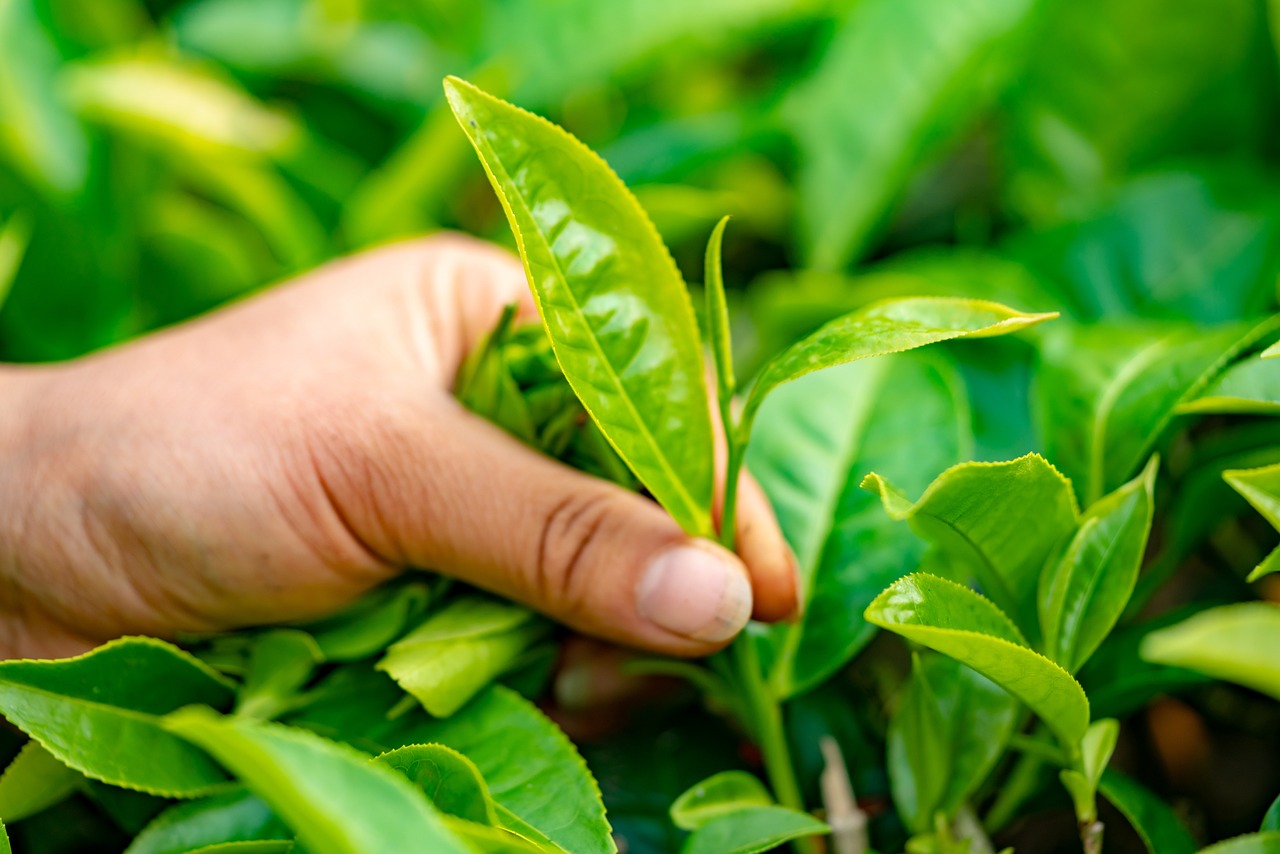
The Role of Ceramics in Tea Ceremonies
When you think about tea ceremonies, the first images that might come to mind are the delicate movements of the host, the fragrant steam rising from freshly brewed tea, and, of course, the intricate ceramics that play a pivotal role in this age-old ritual. Ceramics are not merely vessels for tea; they are integral components that enhance both the functionality and the aesthetic appeal of these ceremonies. Imagine sipping tea from a beautifully crafted cup that feels just right in your hands, its surface cool and smooth. This tactile experience is part of what makes tea ceremonies so special.
Each piece of ceramic ware is thoughtfully designed and chosen to complement the tea being served, creating a harmonious balance between form and function. The material, shape, and color of the ceramics can influence not just the visual experience but also the flavor and aroma of the tea. For instance, a well-crafted teapot can enhance the brewing process, allowing the tea leaves to unfurl and release their full potential. The interaction between the tea and the ceramic can be likened to a dance, where each element plays its part in creating a beautiful performance.
Furthermore, the cultural significance of ceramics in tea ceremonies cannot be overstated. In many cultures, these pieces are imbued with history and tradition. They are often passed down through generations, each piece carrying stories and memories that enrich the experience. For example, in Japan, the choice of tea bowl can reflect the season, the occasion, or even the personality of the host. This deep connection to the past adds layers of meaning to the act of drinking tea, transforming it from a simple beverage into a profound ritual.
As we explore the role of ceramics further, it's essential to recognize the variety of styles and materials used. From the rustic charm of handmade pottery to the refined elegance of porcelain, each type of ceramic brings its own unique character to the tea ceremony. The choice of ceramics can also reflect the philosophical underpinnings of the ceremony itself. For instance, the Japanese concept of wabi-sabi—finding beauty in imperfection—often manifests in the choice of ceramics that are intentionally asymmetrical or unevenly glazed.
In summary, the role of ceramics in tea ceremonies extends far beyond mere functionality. They are vessels of culture, tradition, and artistry that enhance the overall experience of tea drinking. As we continue to appreciate these beautiful pieces, we also celebrate the rich history and meaning behind each cup of tea served.
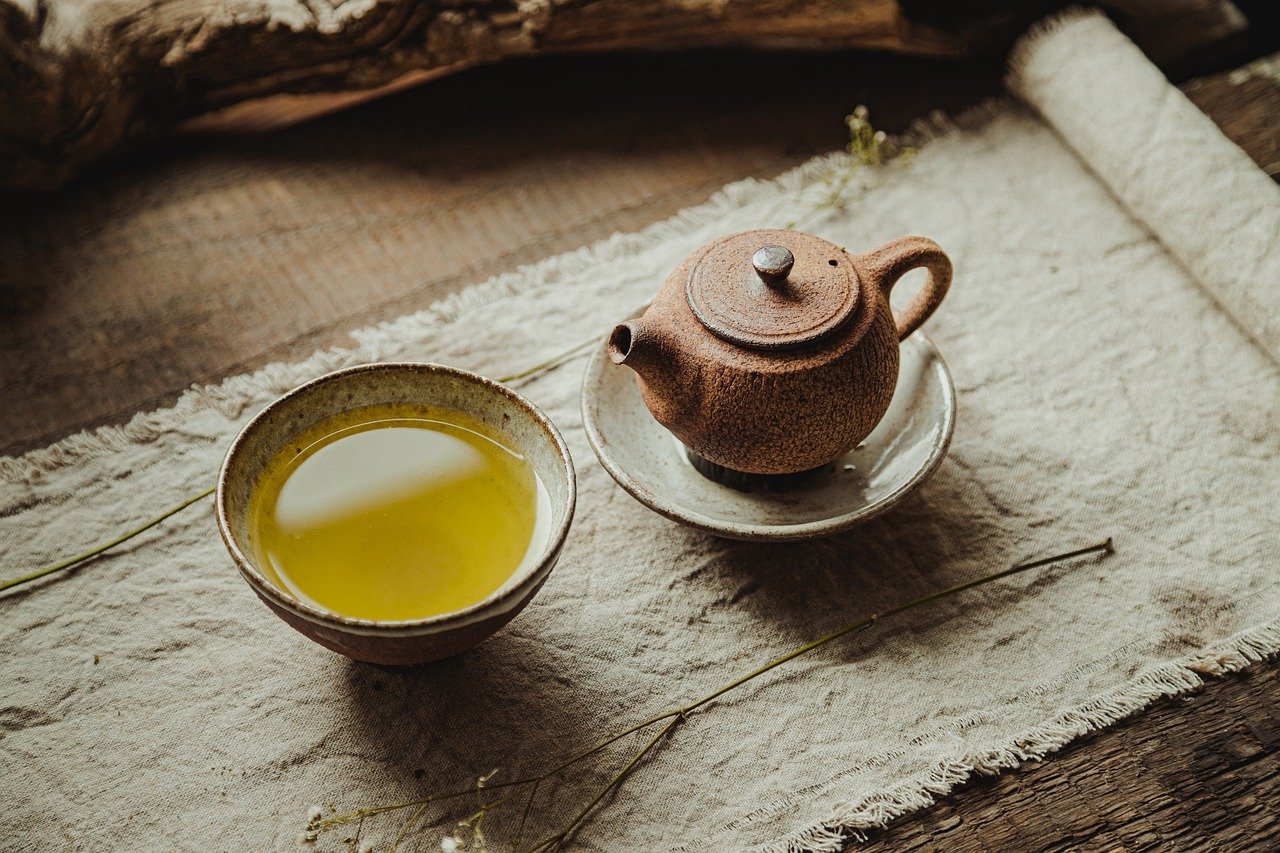
When it comes to tea ceremonies, the type of ceramics used can dramatically influence not only the aesthetic appeal but also the overall experience of the ritual. Different cultures have their unique styles and materials, each contributing to the ceremony's essence. From the delicate porcelain of China to the rustic clay of Japan, the choices are as diverse as the teas themselves. Understanding these ceramics is like peeling back the layers of a rich cultural tapestry, revealing the intricate connections between the vessel and the beverage it holds.
One of the most fascinating aspects of tea ceramics is how each type is designed with purpose. For instance, Japanese tea ware is often characterized by its understated beauty and functionality. The simplicity of these pieces reflects a deep appreciation for nature and the moment, aligning perfectly with the meditative aspects of the tea ceremony. On the other hand, Chinese Yixing teapots are crafted from a special type of clay known for its ability to absorb flavors over time, enhancing the taste of the tea brewed within. This unique property makes Yixing teapots a favorite among tea aficionados, as each pot tells its own story through the teas it has steeped.
Moreover, the choice of ceramic can also affect the temperature and aroma of the tea. For example, thicker ceramics tend to retain heat longer, which is essential for certain types of tea that require higher temperatures for optimal brewing. Conversely, thinner ceramics allow for a more delicate infusion, perfect for lighter teas. This interplay between material and function showcases the artistry involved in creating tea ceramics.
To give you a clearer picture, here’s a brief overview of some popular types of ceramics used in tea ceremonies:
| Type of Ceramic | Origin | Characteristics |
|---|---|---|
| Porcelain | China | Delicate, often intricately designed, and ideal for lighter teas. |
| Yixing Clay | China | Known for its unique clay that enhances flavor; absorbs tea essence. |
| Stoneware | Various | Durable and versatile, suitable for different tea types. |
| Raku | Japan | Characterized by its unique firing process, often used in traditional tea ceremonies. |
| Earthenware | Various | Rustic and often handmade, bringing a personal touch to the ceremony. |
This table highlights just a few of the ceramics that play a pivotal role in tea ceremonies. Each type not only serves a functional purpose but also enriches the overall experience, making every sip a journey through history and culture. The beauty of tea ceremonies lies in these details, where the choice of ceramic becomes a silent yet powerful participant in the ritual.
As we explore the world of tea, it becomes evident that ceramics are more than mere containers; they are vessels of tradition, artistry, and flavor. Each teapot, cup, and bowl carries with it the stories of generations, making every tea ceremony a unique experience that transcends time and space.
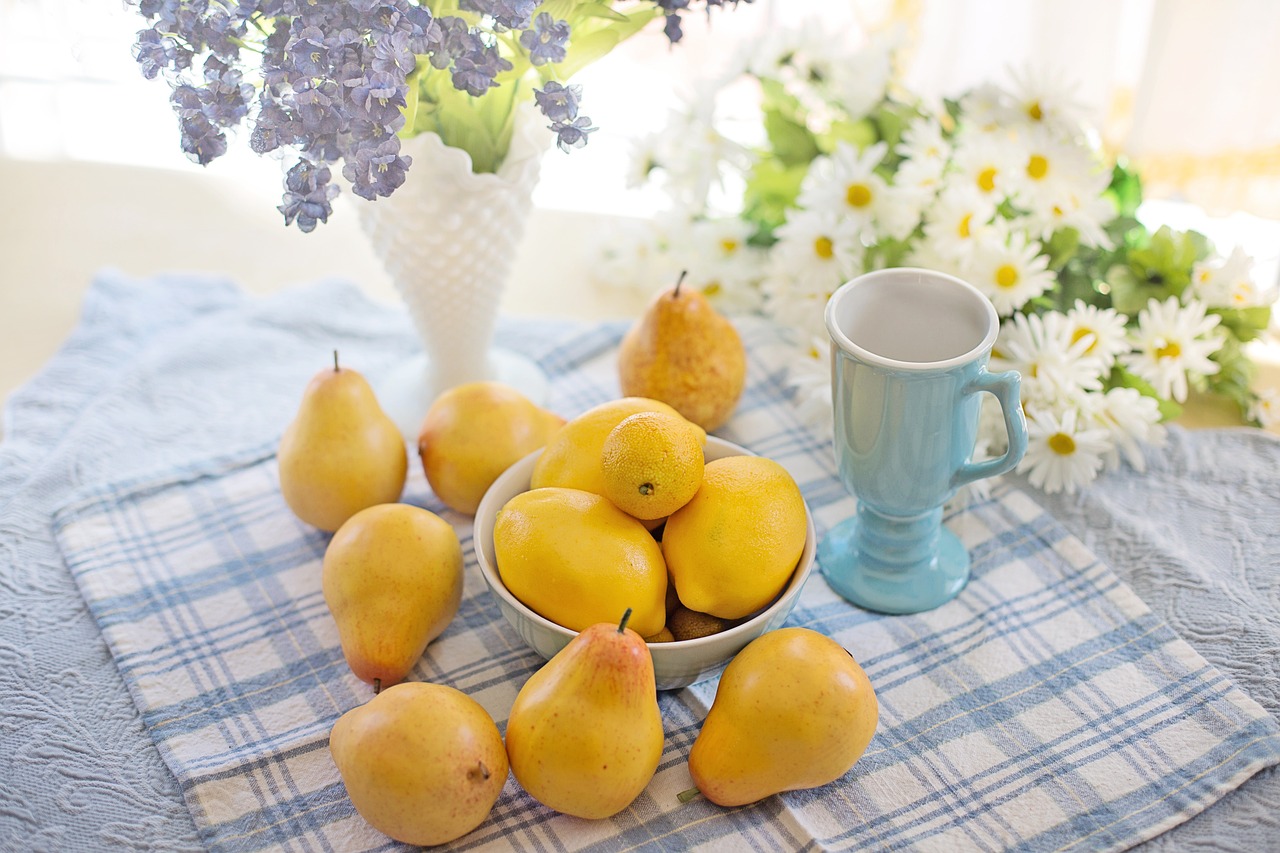
Traditional Japanese Tea Ware
When you think of Japanese tea ceremonies, the first image that often comes to mind is the exquisite ceramics that play a pivotal role in these rituals. The beauty of traditional Japanese tea ware lies not just in its function but in its profound connection to Japanese culture and aesthetics. Each piece is crafted with meticulous attention to detail, embodying the principles of wabi-sabi—the beauty of imperfection and transience. This philosophy is deeply woven into the fabric of Japanese life, and it resonates beautifully in the tea ware used during ceremonies.
One of the most iconic forms of traditional Japanese tea ware is the chawan, or tea bowl. These bowls are not merely vessels; they are works of art that come in various shapes, sizes, and glazes, each reflecting the season or the specific tea being served. The tactile experience of holding a chawan, with its unique texture, enhances the overall experience of drinking tea. Imagine cradling a warm bowl in your hands, the earthy feel of the ceramic connecting you to the centuries of tradition it represents.
Moreover, the tea caddy, known as natsume, is another essential piece of tea ware. It is designed to store the powdered matcha tea used in the ceremony. Traditionally made from wood and lacquered to a high sheen, the natsume is not only functional but also serves as a symbol of the meticulous care that goes into preparing for a tea ceremony. The act of retrieving the tea from this elegant container adds an extra layer of reverence to the ritual, emphasizing the importance of each step in the process.
To truly appreciate the significance of these ceramics, one must understand the ceremonial context in which they are used. The tea ceremony, or chanoyu, is a meditative practice that emphasizes harmony, respect, purity, and tranquility. Each piece of tea ware is chosen with intention, and the way they are arranged and presented is a reflection of the host's attention to detail and respect for the guests. The entire experience is a dance of aesthetics and mindfulness, where every element, including the ceramics, plays a crucial role.
In conclusion, traditional Japanese tea ware is much more than just functional pottery; it is a vital part of a cultural narrative that celebrates the art of tea. The beauty of these ceramics lies in their ability to connect people to the past while enriching the present moment of the tea ceremony. As we sip our tea from these beautifully crafted vessels, we are reminded of the centuries of tradition that have shaped this exquisite practice.

Chinese Yixing Teapots
When we think about tea, especially in the context of Chinese culture, one name that often comes to mind is Yixing teapots. These exquisite teapots are not just vessels; they embody centuries of history, tradition, and craftsmanship. Originating from the Yixing region in Jiangsu province, these teapots are made from a special type of clay called zisha, which translates to "purple sand." This unique material is what sets Yixing teapots apart, allowing them to absorb the flavors of the tea, enhancing each brew over time. Imagine a well-loved teapot that carries the essence of every tea it has brewed—now that’s a remarkable idea!
The beauty of Yixing teapots lies not only in their functionality but also in their artistic design. Each pot is typically handcrafted, showcasing the artisan's skill and creativity. They come in various shapes and sizes, from the classic round forms to more intricate designs that reflect nature, animals, or even mythical creatures. This variety allows tea drinkers to choose a teapot that resonates with their personal style while also serving as a conversation starter during tea ceremonies.
One of the most fascinating aspects of Yixing teapots is their ability to enhance the flavor of the tea. The porous nature of the clay allows for a subtle interaction between the tea and the pot, which can deepen the flavor profile with each use. Over time, a well-seasoned Yixing teapot can develop a unique character, making each cup of tea an experience that is not only about taste but also about the stories and memories embedded within the pot.
Moreover, Yixing teapots are often associated with the traditional Chinese tea ceremony, where they play a crucial role. During these ceremonies, the act of preparing and serving tea becomes a ritualistic experience, and the Yixing teapot is at the heart of it all. It symbolizes harmony, respect, and a deep appreciation for the art of tea-making. This cultural significance is what makes Yixing teapots cherished items, often passed down through generations as family heirlooms.
| Feature | Description |
|---|---|
| Material | Zisha (purple sand) clay |
| Flavor Enhancement | Absorbs and enhances tea flavors over time |
| Artistic Design | Handcrafted with various shapes and intricate details |
| Cultural Significance | Central to traditional Chinese tea ceremonies |
In conclusion, Yixing teapots are more than just tea-making tools; they are a testament to the rich cultural heritage of China. Their ability to enhance the tea experience, coupled with their artistic beauty, makes them a beloved choice among tea enthusiasts worldwide. So, the next time you sip from a Yixing teapot, take a moment to appreciate not just the tea, but the history and craftsmanship that has gone into creating that perfect brew.
- What makes Yixing teapots unique? Yixing teapots are made from a special clay that absorbs tea flavors, enhancing the taste over time.
- Can I use a Yixing teapot for different types of tea? It's best to use a Yixing teapot for one type of tea to preserve its unique flavor profile.
- How do I care for my Yixing teapot? Rinse it with warm water and avoid soap, as it can strip the pot of its absorbed flavors.

The Aesthetic Aspects of Tea Ceramics
When we think about tea ceremonies, the first thing that often comes to mind is the rich aroma of freshly brewed tea wafting through the air. However, the beauty of these rituals extends far beyond the beverage itself; it encompasses the exquisite ceramics that play a pivotal role in the experience. The aesthetic appeal of tea ceramics is not just about their visual charm; it’s about how these pieces enhance the entire atmosphere of the ceremony, transforming a simple act of drinking tea into a profound ritual.
The visual aspects of tea ceramics can evoke a sense of tranquility and mindfulness. The colors, shapes, and textures of the teapots and cups draw participants into a world where every detail matters. For instance, a beautifully crafted Yixing teapot, with its earthy tones and smooth surface, invites contemplation. The way light reflects off its surface can create a serene ambiance, encouraging participants to slow down and savor each sip. This is where the art of ceramics truly shines, as it becomes a medium through which emotions and traditions are expressed.
Moreover, the aesthetic qualities of tea ceramics can significantly influence the perception of tea itself. A delicate porcelain cup can elevate the experience, making even the simplest tea feel like a luxurious treat. The intricate designs and patterns often tell stories of cultural heritage and craftsmanship, connecting the drinker to a larger narrative. Imagine holding a cup that has been hand-painted with traditional motifs; each sip becomes a journey through time and culture, adding layers of meaning to the tasting experience.
In many cultures, the choice of ceramics is intentionally made to complement the type of tea being served. For example, lighter teas may be served in lighter, more delicate cups, while stronger teas might be presented in more robust vessels. This thoughtful pairing of tea and ceramics not only enhances the flavor but also creates a visually harmonious experience. The interplay of color, form, and texture can be likened to a well-composed piece of music, where each element contributes to a greater whole.
Additionally, the functionality of ceramics in tea ceremonies should not be overlooked. While aesthetics play a crucial role, the design of teapots and cups is also tailored to enhance the brewing and drinking experience. For instance, the spout of a teapot is crafted to ensure a smooth pour, while the handle is designed for easy grip. These practical aspects are often harmoniously integrated with artistic elements, showcasing the duality of form and function in tea ceramics.
In essence, the aesthetic aspects of tea ceramics invite us to appreciate not just the tea itself, but the entire ritual surrounding it. They remind us that beauty can be found in the simplest of moments, encouraging us to engage with our surroundings and savor the experience. Whether you are participating in a traditional tea ceremony or enjoying a quiet moment with a cup of tea at home, the ceramics you choose can significantly influence your experience, making it all the more memorable.
- What types of ceramics are best for tea ceremonies?
While it depends on personal preference, traditional options include porcelain, stoneware, and Yixing clay. Each type has its unique characteristics that can enhance the tea experience.
- How do aesthetics influence the tea drinking experience?
The visual appeal of tea ceramics can create a calming atmosphere and enhance the overall enjoyment of the tea, making each sip feel special.
- Can modern ceramics be used in traditional tea ceremonies?
Absolutely! Many modern ceramics blend traditional aesthetics with contemporary designs, allowing for a unique tea experience that respects cultural heritage.
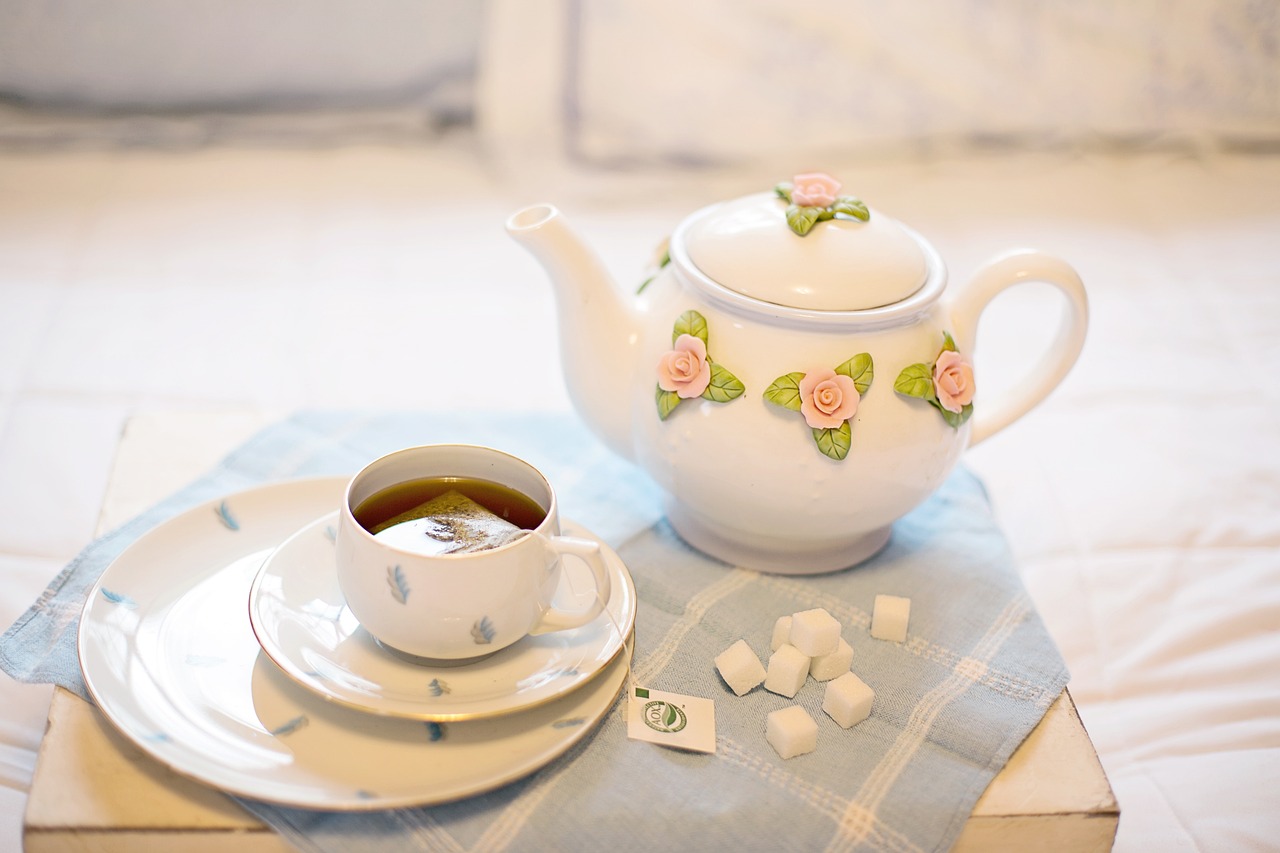
Modern Interpretations of Tea Ceremonies
In today's fast-paced world, the art of tea ceremonies is experiencing a fascinating transformation. While traditional practices remain cherished, modern interpretations are breathing new life into these age-old rituals. This evolution is not just about changing the way tea is prepared or consumed; it reflects broader cultural shifts and the blending of global influences. Have you ever wondered how a simple cup of tea can connect us across different cultures and eras? Well, let’s dive into the ways contemporary tea ceremonies are embracing innovation while honoring their roots.
One of the most striking aspects of modern tea ceremonies is the incorporation of innovative ceramic designs. Artists and potters are now experimenting with various materials, colors, and shapes to create unique tea ware that tells a story. These contemporary pieces often draw inspiration from traditional forms but are reimagined to fit modern aesthetics. For instance, you might find teapots that combine sleek, minimalist designs with vibrant glazes, creating a visual feast that enhances the overall tea experience. It's like a dance between the old and the new, where each piece of ceramic art serves as a bridge connecting generations.
Moreover, the settings for tea ceremonies have also evolved. While traditional ceremonies often take place in serene, dedicated spaces, modern interpretations are popping up in urban cafes, art galleries, and even homes. This shift has made tea ceremonies more accessible to a broader audience, inviting people from various backgrounds to experience the ritual in a way that resonates with their lifestyle. Imagine sipping a perfectly brewed cup of tea while surrounded by contemporary art; it’s an experience that tantalizes the senses and encourages a deeper appreciation of the moment.
Another significant aspect of modern tea ceremonies is the global influence they now embody. As tea culture spreads across the globe, various regions are adding their unique twists to the ritual. For example, you might see a fusion of Japanese and British tea traditions, where matcha is served alongside scones, creating a delightful culinary experience. This blending of cultures not only enriches the ceremony but also fosters a sense of community among tea enthusiasts worldwide. It’s a beautiful reminder that tea, in all its forms, has the power to unite us.
In addition to the aesthetic and cultural shifts, modern tea ceremonies are also becoming more inclusive. Many practitioners are now focusing on sustainability and ethical sourcing, ensuring that the tea used is not only high quality but also produced in an environmentally friendly manner. This conscious approach resonates with a growing audience that values sustainability in their lifestyle choices. So, when you sit down for a cup of tea today, you can feel good knowing that you’re participating in a ritual that respects both the earth and its traditions.
To summarize, modern interpretations of tea ceremonies are a vibrant tapestry woven from threads of tradition, innovation, and global influence. They invite us to pause, reflect, and connect with others, all while enjoying the simple pleasure of a cup of tea. Whether you’re an aficionado or a curious newcomer, there’s a place for everyone in this evolving landscape of tea culture. So, the next time you brew a cup, take a moment to appreciate not just the flavor, but the rich history and modern significance behind it.
- What is the significance of ceramics in modern tea ceremonies? Ceramics enhance the aesthetic and functional aspects of tea ceremonies, providing a beautiful and practical way to serve and enjoy tea.
- How have modern tea ceremonies changed from traditional ones? Modern ceremonies often incorporate innovative designs, diverse settings, and global influences, making them more accessible and relatable to contemporary audiences.
- Are modern tea ceremonies more sustainable? Yes, many modern tea ceremonies focus on sustainability by using ethically sourced tea and environmentally friendly practices.
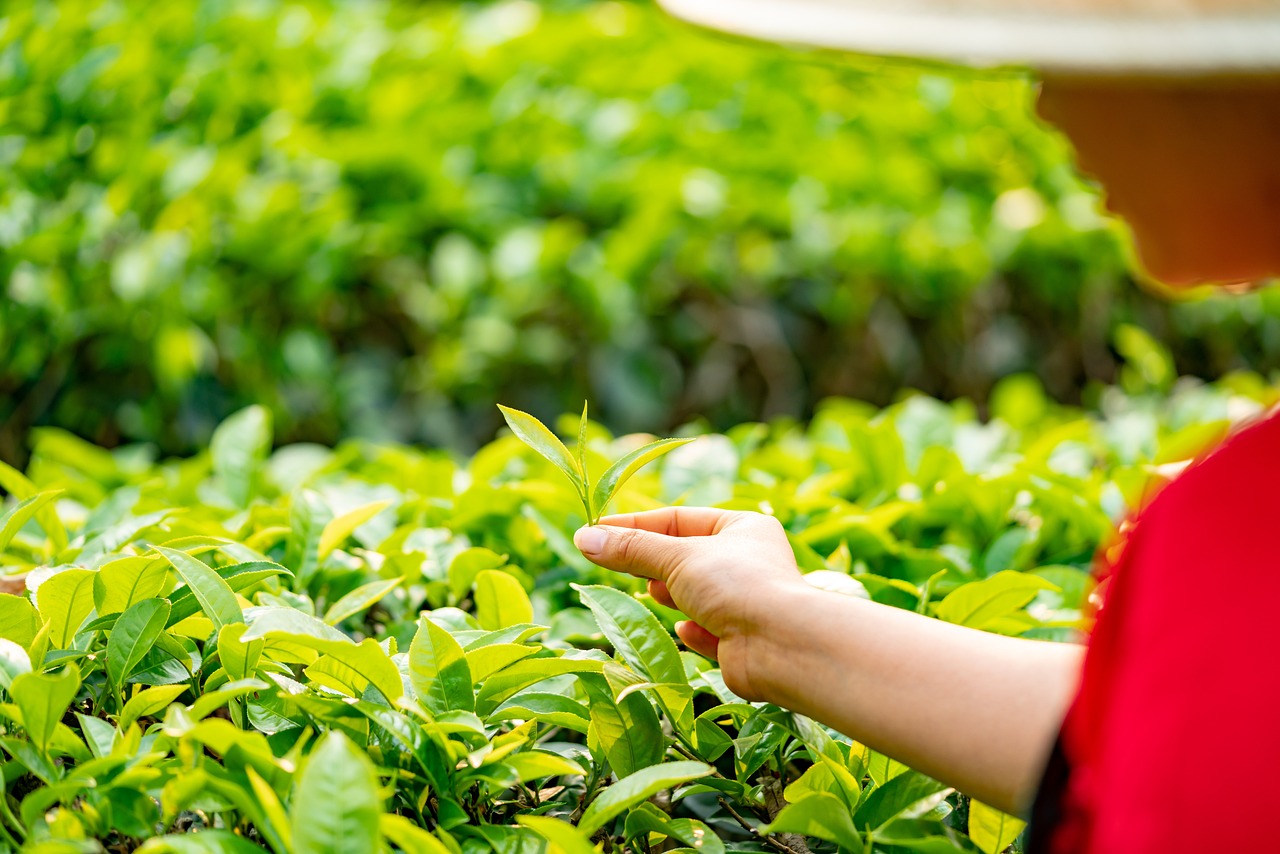
Innovative Ceramic Designs
In the evolving landscape of tea culture, have emerged as a fascinating intersection between tradition and modernity. Artists and potters are not merely replicating historical forms; they are reimagining them, breathing new life into the age-old practice of tea ceremonies. Imagine sipping your favorite brew from a teacup that not only feels good in your hand but also tells a story through its design. These modern interpretations challenge our perceptions and elevate the tea experience to new heights.
One of the most striking aspects of these innovative designs is their ability to blend functionality with artistic expression. For instance, many contemporary ceramics incorporate elements of minimalism, which is characterized by clean lines and simple forms. This approach not only enhances the aesthetic appeal but also emphasizes the tea itself, allowing the drinker's focus to remain on the flavor and aroma. Moreover, some designers are experimenting with asymmetrical shapes and unexpected textures, creating pieces that provoke thought and discussion. It’s as if each cup or teapot is a canvas, inviting you to engage with it on a deeper level.
Additionally, the use of technology in ceramic design has opened up new avenues for creativity. With the advent of 3D printing, potters can create intricate patterns and structures that were once considered impossible. This technological advancement allows for a greater level of customization, enabling tea enthusiasts to find pieces that resonate with their personal style. Imagine a teapot that not only brews your tea but also reflects your unique personality through its design. This fusion of art and technology is paving the way for a new generation of tea ware that is both beautiful and functional.
Furthermore, sustainability is becoming a key consideration in the world of ceramic design. Many modern potters are prioritizing eco-friendly materials and practices, ensuring that their creations are not only visually appealing but also environmentally responsible. This shift towards sustainability resonates with a growing number of consumers who are conscious of their impact on the planet. By choosing ceramics that are crafted with care, tea lovers can enjoy their rituals while also supporting a healthier planet.
To illustrate the diversity of innovative ceramic designs, consider the following table that highlights some of the key characteristics of modern tea ceramics:
| Design Element | Description |
|---|---|
| Minimalism | Focus on simplicity and clean lines, enhancing the tea experience. |
| Asymmetry | Unique shapes that provoke thought and conversation. |
| Technology Integration | Use of 3D printing for intricate designs and customization. |
| Sustainable Practices | Emphasis on eco-friendly materials and responsible production methods. |
Ultimately, the evolution of ceramic designs in tea ceremonies reflects a broader cultural shift towards personalization and sustainability. As we embrace these innovative creations, we not only celebrate the rich history of tea but also pave the way for future generations to enjoy this cherished ritual in new and exciting ways. So, whether you're a seasoned tea connoisseur or a curious newcomer, keep an eye out for these innovative ceramic designs that promise to enrich your tea experience!
- What are the main benefits of using innovative ceramic designs in tea ceremonies? Innovative ceramic designs enhance the aesthetic appeal, provide a unique experience, and often incorporate sustainable practices.
- How does technology influence modern ceramic designs? Technology, such as 3D printing, allows for intricate designs and greater customization, making each piece unique.
- Why is sustainability important in ceramic design? Sustainable practices help reduce environmental impact and promote responsible consumption among tea enthusiasts.
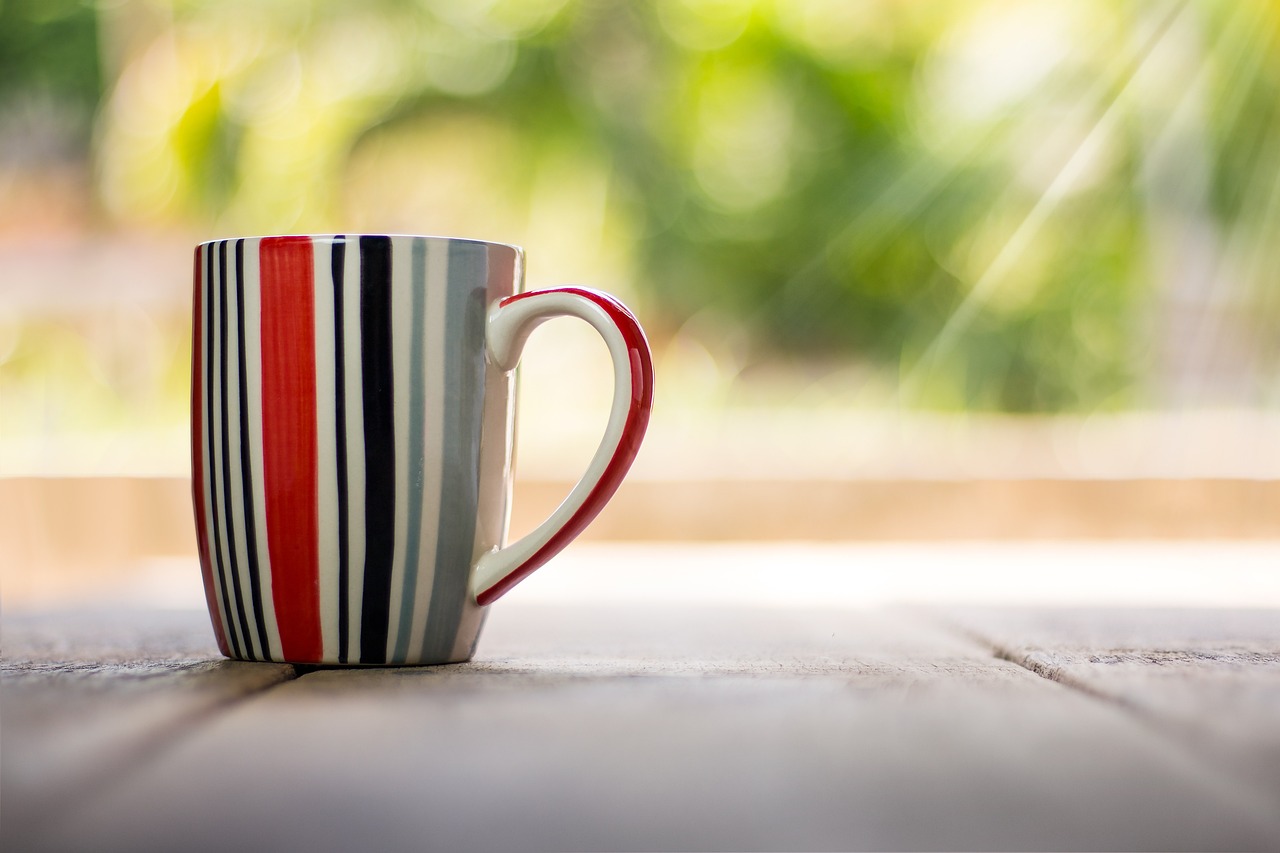
The Global Influence of Tea Ceremonies
The influence of tea ceremonies extends far beyond their cultural origins, creating a ripple effect that has transformed how people around the world perceive and enjoy tea. From the serene tea gardens of Japan to the bustling streets of London, the ritual of tea drinking has evolved into a universal language of hospitality and connection. This global embrace of tea ceremonies showcases the beauty of cultural exchange, where traditions are shared, adapted, and celebrated in diverse ways.
In many cultures, tea ceremonies serve as a social glue, bringing people together for meaningful conversations and shared experiences. For instance, in the Middle East, the act of serving tea is steeped in tradition, often accompanied by sweets and a warm welcome. Similarly, in England, the afternoon tea ritual has become synonymous with elegance, featuring delicate pastries and fine china. Each of these practices, while unique, shares a common thread: the appreciation for the art of tea.
Moreover, as tea ceremonies have traveled the globe, they have inspired new interpretations that resonate with local customs and preferences. For example, the traditional Japanese tea ceremony, known as Chanoyu, emphasizes mindfulness and simplicity, which can be seen in modern adaptations that prioritize sustainability and organic practices. In contrast, Western tea culture often celebrates a more casual approach, focusing on the social aspects of tea drinking rather than the formalities of preparation.
One of the most exciting developments in the globalization of tea ceremonies is the emergence of innovative ceramic designs that reflect local aesthetics while honoring traditional craftsmanship. Artists and potters are now creating pieces that blend functionality with artistic expression, resulting in stunning tea ware that enhances the overall experience. This fusion of old and new not only preserves the cultural significance of tea but also invites a broader audience to partake in its enjoyment.
As we explore the global influence of tea ceremonies, it’s essential to recognize the role of ceramics in this evolution. The materials and designs used in tea ware have been adapted to suit various tastes and preferences, making tea ceremonies more accessible to diverse populations. For instance, the use of vibrant colors and modern shapes in ceramic tea sets can attract younger generations, while still paying homage to traditional forms.
In conclusion, the global influence of tea ceremonies is a testament to the power of cultural exchange. As these rituals continue to evolve, they foster connections among people from different backgrounds, creating a shared appreciation for tea. Whether through traditional practices or modern adaptations, the essence of tea ceremonies remains the same: a celebration of life, community, and the simple joys that come with sharing a cup of tea.
- What is the significance of tea ceremonies? Tea ceremonies are significant as they promote mindfulness, social connection, and cultural appreciation.
- How have tea ceremonies changed over time? They have evolved to incorporate modern influences while retaining traditional elements, making them more accessible to a global audience.
- What role do ceramics play in tea ceremonies? Ceramics enhance the aesthetic experience and functionality of tea preparation and consumption, reflecting cultural values and artistic expression.
- Can anyone participate in a tea ceremony? Yes, tea ceremonies can be adapted for anyone, regardless of cultural background, making them inclusive and welcoming.
Frequently Asked Questions
- What is the significance of tea ceremonies?
Tea ceremonies are not just about drinking tea; they embody a rich cultural heritage and are a form of art that emphasizes mindfulness, respect, and tranquility. They serve as a social ritual, fostering connections among participants while celebrating the beauty of simplicity.
- How do ceramics enhance the tea ceremony experience?
Ceramics play a crucial role in tea ceremonies by providing both functional and aesthetic value. The choice of ceramic ware affects the flavor and aroma of the tea, while the design and craftsmanship contribute to the overall ambiance, making the experience more enjoyable and memorable.
- What types of ceramics are commonly used in tea ceremonies?
There are various types of ceramics used in tea ceremonies, including traditional Japanese tea ware and Chinese Yixing teapots. Each type has its unique characteristics and significance, influencing both the preparation and consumption of tea.
- Why is Japanese tea ware considered special?
Japanese tea ware is renowned for its elegant simplicity and attention to detail. Each piece is crafted with the intention of enhancing the tea-drinking experience, reflecting the cultural values of harmony and aesthetics prevalent in Japanese society.
- What makes Yixing teapots unique?
Yixing teapots are made from a special type of clay that is known for its porous nature, which allows the pot to absorb flavors over time. This unique characteristic enhances the taste of the tea brewed within, making it a favorite among tea enthusiasts.
- How do modern interpretations of tea ceremonies differ from traditional ones?
Modern interpretations of tea ceremonies often blend traditional practices with contemporary influences, incorporating innovative ceramic designs and new flavors. While they maintain the essence of mindfulness and respect, they also embrace creativity and personal expression.
- Can tea ceremonies be found worldwide?
Absolutely! Tea ceremonies have transcended cultural boundaries, influencing a variety of practices around the globe. Each culture adapts the ceremony to reflect its own traditions, showcasing the universal appeal of tea as a symbol of hospitality and connection.
- What role do aesthetics play in tea ceremonies?
Aesthetics are vital in tea ceremonies, as they contribute to the overall ambiance and experience. The visual appeal of the ceramics, the arrangement of the tea set, and the presentation of the tea itself all enhance the ritual, making it a feast for the senses.



















